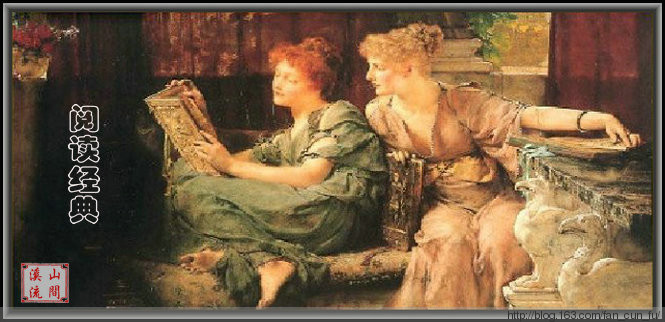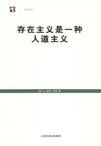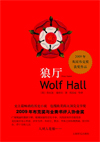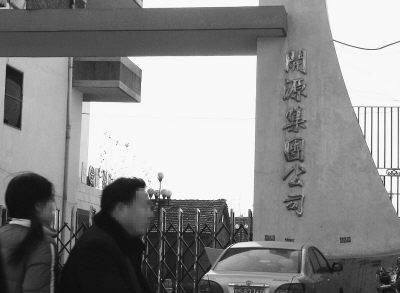PROTECTING THE ATMAN
luyued 发布于 2011-05-24 22:47 浏览 N 次THE FIVE KOSAS, PROTECTING THE ATMAN
ASANAS:
It is important that the place of meditation and the time for meditation be conducive to inner peace and tranquility. The place and time should be free from external disturbance and distraction. A secluded room set aside for meditation is recommended. The auspicious time for meditation is brahama muhurtha, 4.00 to 6.00a.m., when Nature is in a most peaceful state. A person who meditates should be mentally and physically relaxed and comfortable. He may sit on a chair or on any comfortable seat if his seating helps concentrate on meditation. However, yoga recommends that a yogi sit upright on the floor with the head, neck and torso on a vertical line, perpendicular to the ground. The positioning of the legs and feet play a major role in most of the asanas. There are a number of ways one can position the legs and feet while sitting on the floor during meditation. Many yogic poses/postures (yogasanas) have come down to us from the ancient Hindu traditions. These asanas were used by the ancients for physical and mental health. Yoga system recommends some of them as useful postures for the different steps, such as pranayama, pratyahara and meditation of Astanga Yoga. Sidhasana, Padmasana, Svastikasana, Vajrsana and Sukhasana are five of these recommended asnas.
推荐阅读: Chin Mudra... may slow healing or exacerbate the existing problem. Approach them gently and attentively. Treat yourself and your hands in a loving way.Although you can practice at any time and any where, the practice is more than just a postural mudra. It is a sacred mudra, and its practice is exemplified if you are in a sacred space. This isn’t to say you can not practice in a crowded room or a traffic jam. A sacred space comes from your frame of mind. Therefore, you may be walking, sitting, riding in a car, or running...
A brief description of these asanas is given below.
Sidhasana:
In this posture, both legs are bent at the knee, left heel left near the perineum resting against the right thigh, and the right heel over the left ankle keeping the right heel against the pubic bone. The arms are stretched in front, and placed on the respective knees with the palm facing upwards in cin-mudra (see the mudras).
推荐阅读: 智者瑜伽 :瑜伽的知识...r freedom, hearing the truth, reflection upon that truth, and meditation, which is defined as consolidation and transcendence.这列车的歧视;它八年肢,和其他7名肢体支队,自律,渴望自由,听实话,思考,真理,和冥想,它的定义是巩固和超越。 The tradition of Jnana Yoga teaches that "Liberation is attained, not by w...
Padmasana:
For padmasana one sits with both the legs bent at the knee, placing the right foot at the root of the left thigh with the heel near the navel, and the left foot at the root of the right thigh with the heel near the navel. The arms are stretched in front placing the back of the hand on the respective knee with the palm facing upwards.
推荐阅读: Jnana Yoga... intellect develops, our perception of the world becomes clearer. We start seeing things in a different light. With the advance ...
Svastikasana:
In svastikasana, the left foot is placed near the right thigh muscle, and the right foot is placed in the space between the left and right calf muscles. The hand is placed on the knees in jnana mudra or cin-mudra.
Vajrasana:
Vajrasana is practiced with the legs folded at the knees and the feet stretched backwards, and the big toes are crossed, keeping the knees together but the heels apart. The buttock is lowered and placed between the feet. The hands are placed on the respective knees with the palms facing downwards.
推荐阅读: Ashtanga Yoga Philosophy and Practice...ts can make a big difference and how growth in one posture will benefit the execution of other postures. Additional information on the mythological background and yogic context of specific postures enhances and enlivens the text. The book does not stop the...
Sukhasana:
In Sukhasana the left foot is folded under the right thigh, the right foot under the left thigh, with the hands on the lap with the palms facing upwards and the right palm on the left (bhairava mudra). This is the easy meditation pose, ideal for beginners.
Savasana:
(This is not a meditation pose. But it is practiced after the pranayama session at the beginning of meditation) In this asana the yogi lies on his back without a pillow, with the hands a little away from the thigh and with the palm turned upwards. The heels are kept together, but the toes are apart.
For more details on ‘Asanas’ please refer to B.K.S Iyengar‘s, Light on Yoga (1997) New Delhi, HarperCollins
Mudras and Banda
The yogasanas are techniques that help the process of vitalizing the gross body and subtle body, the physical and mental powers of the individual through pranayama, through the intake, storing and circulation of the vital air (prana); they help also the process of the withdrawal of the senses from external objects (pratyahara) that facilitates concentration in meditation.
Mudra means a symbolic gesture. Mudras in yogic asanas symbolically evoke the inner mood of the yogi in a particular asana. They also facilitate the withdrawal of the senses from objects that distract one’s attention. Two mudras, usually used in asanas, helping respectively the pranayama and pratyahara are Jnana mudra and Cin-mudra.
Jnana and Cin-mudras:
Cin-Mudra
Cin-Mudra is the psychic gesture of consiousness. It is performed the same way as the Jnana Mudra; the only difference is that the palms of both hands face upward while resting on the knees. In some pranayamas, which use the right hand to close and open the nostrils, only the left hand remains free for cin-Mudra.
Bhairava/bhairavi-mudra:
Bhairava/Bhairavi-mudra is keeping the hands on the lap, placing the dorsal right hand on the left palm (bhairava mudra), or the dorsal left hand on the right palm (bairavi mudra). Both palms face upwards in both the madras.
Banda is the contracting or tightening of the various parts of the body in the practice of yogic techniques. They also facilitate the circulation of different vital airs and the purification of the gross and subtle body of the yogi.
Three important bandhas are, mula bandha, uddiyani bandha, and jalandhara bandha. In mula bandha the muscles of the region of perineum are contracted and drawn upward. It facilitates the prana-apana vayu’s entrance into the susumna nadi. This bandha is used in the Sidhasana. Uddiyana bandha is practiced by emptying all the air from the lungs forcefully through the mouth and then contracting the abdominal muscles, drawing them upwards and back towards the spine; the muscles are slowly released, keeping the air outside as long a possible. This bandha can be practiced also in the standing posture.
推荐阅读: 中英文俗语谚语...aby by the name of the nurse's sake.醉翁之意不在酒。17. Misfortune might be a blessing in disguises.祸兮福所倚,福兮祸所伏。18. Names are debts.树大招风。19. Nothing venture, nothing have.不入虎穴,焉得虎子。20. Rest breeds rust.生命在于运动。21. Rome was not built in a day.冰冻三尺非一日之寒。22. Save your breath to cool your porridge.各人自扫门前雪,莫管他人瓦上霜。23. Short pleasure, long lament.一失足成千古恨。24. Stick together through thick and thin.患难与共。25. Take things as they come.既来之则安之。26. The pot calls the kettle black.五十步笑一百步。27. The shepherd would rather lose the wool ...
Jaladhara bandha is practiced while the breath is retained in the lungs during the interval of inhalation and exhalation, by pressing the chin against the chest. This bandha is practiced in the sidhasana, padmasana and svastikasana. The bandhas are used with pranayama; they are also practiced without any connection with pranayama.
Pranayama
In the Hindu thought, which holds on to Vedic cosmology, prana is the cosmic vitalizing principle which is ever pervasive in the whole universe. From the scientific standpoint, prana may be considered the origin of fundamental forces and all forms of energies in the universe. No matter particle and no energy quanta can exist without motion. And no motion, no work, is possible without prana. At the atomic level, prana can be considered the energy that makes the electrons move in an atom. It is energy at its most fundamental level.
Prana as the subtle energy enters the human body either through or without a medium. It is convenient to collect prana through inhaling air, but it is possible to imbibe and assimilate prana without the medium of the inhaling air. Besides, prana constitutes the second sheath (kosa) of human being protecting the self by its intrinsic energies.
Pranayama is the process of controlling prana, and it is used in Yoga as a separate practice to help the yogi clear and cleanse the mind and body in preparation for meditation, and to help him in focusing the mind in the practice of asanas (yogic postures) maximizing the benefit of the practice. Prana is controlled by regulating the inhaling and exhaling of air. Air is a gross body, and it enters the human body through the gross bodies of the respiratory system, such as, nose, wind pipe and lungs. There are three stages in pranayama, namely, inhalation (puraka), exhalation (recaka) and retention (kumbaka). Pranayama can be practiced with retention of air (kumbaka sahita) or without the retention of air (kumbaka rahita).
The most commonly used forms of pranayama used in meditation are Ujjayi, Dirgha Pranayama and Nadi Sodhini. In the ujjayi the practitioner takes a long deep breath through the nostrils and contracts the back of the throat, creating a hissing sound and sending out the air in the same way. In the dirgha pranayama (complete or three part breathing), the practitioner uses diaphragmatic belly breathing, completely filling and emptying the lungs, and retaining the breath in between. In the nadi-sodhini (channel cleansing) the right hand is held up with the thumb near the right nostril and the ring finger on the side of the left nostril; the thumb and ring finger are used to open and close the respective nostrils for inhalation and exhalation.
- 06-21· 你这该死的温柔 第十七章
- 06-14· 至天使的歌
- 06-14· 很庆幸。
- 06-14· 2011叶文智携手大汉集团进
- 06-14· 《十世轮回之沧海长歌》
- 06-14· 你这该死的温柔 第十八章
- 06-14· 大盛游泳二月份
- 06-08· 耐克和李宁在中国的错位
- 06-08· 耐克代工厂环境恶劣 卧底
- 06-03· 北京西风东韵设计公司是
- 06-02· 倬亿国际贸易网——江门
- 06-02· 明成化粉红胎天字罐一对
- 06-02· 《东坡七集》清光绪端方
- 06-02· “公开的豹子地毯不是明
- 05-31· 2009年10月4日
- 05-31· 2009年6月25日
- 05-31· 伦德保罗
- 05-31· 广西《大山河》观念行为
- 05-31· 广西《大山河》观念行为
- 05-31· 【原创】反对“把绩溪划










